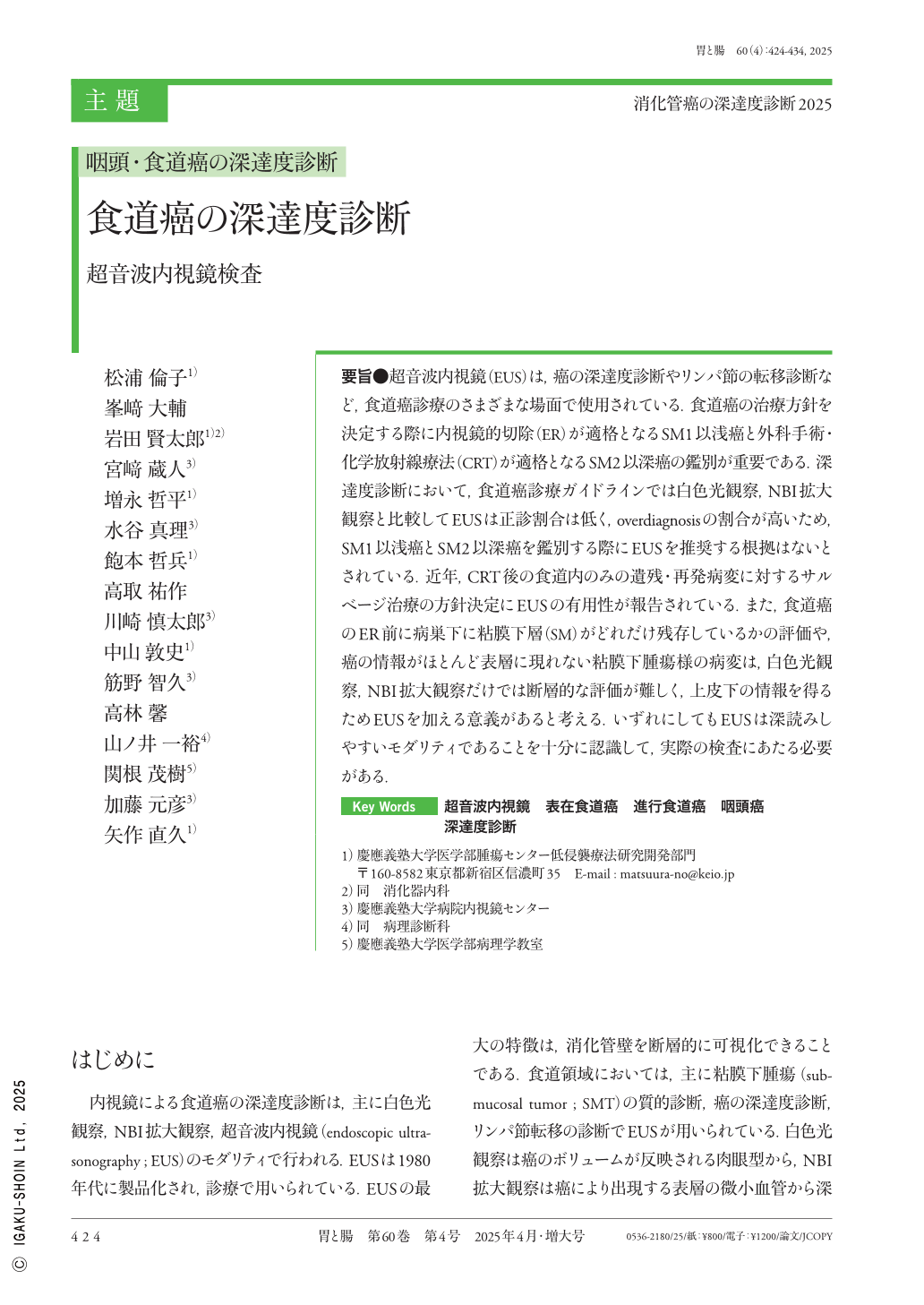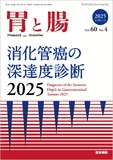Japanese
English
- 有料閲覧
- Abstract 文献概要
- 1ページ目 Look Inside
- 参考文献 Reference
要旨●超音波内視鏡(EUS)は,癌の深達度診断やリンパ節の転移診断など,食道癌診療のさまざまな場面で使用されている.食道癌の治療方針を決定する際に内視鏡的切除(ER)が適格となるSM1以浅癌と外科手術・化学放射線療法(CRT)が適格となるSM2以深癌の鑑別が重要である.深達度診断において,食道癌診療ガイドラインでは白色光観察,NBI拡大観察と比較してEUSは正診割合は低く,overdiagnosisの割合が高いため,SM1以浅癌とSM2以深癌を鑑別する際にEUSを推奨する根拠はないとされている.近年,CRT後の食道内のみの遺残・再発病変に対するサルベージ治療の方針決定にEUSの有用性が報告されている.また,食道癌のER前に病巣下に粘膜下層(SM)がどれだけ残存しているかの評価や,癌の情報がほとんど表層に現れない粘膜下腫瘍様の病変は,白色光観察,NBI拡大観察だけでは断層的な評価が難しく,上皮下の情報を得るためEUSを加える意義があると考える.いずれにしてもEUSは深読みしやすいモダリティであることを十分に認識して,実際の検査にあたる必要がある.
Endoscopic ultrasound(EUS)is used in various aspects of esophageal cancer treatment, including the diagnosis of cancer invasion depth and lymph node metastasis. When deciding on a treatment strategy for esophageal cancer, distinguishing between SM1 or shallow cancers that are eligible for endoscopic resection and SM2 or deeper cancers that are eligible for surgical treatment or chemoradiotherapy(CRT)is important. Regarding the depth diagnosis, the Esophageal Cancer Treatment Guidelines state that there is no basis for recommending EUS when differentiating between SM1 and SM2 cancers, as it has low positive diagnosis and high overdiagnosis rates, as compared to white light and magnifying observations. Recently, the usefulness of EUS in determining the salvage treatment policy for residual or recurrent lesions after CRT has been reported. Additionally, EUS is considered useful for assessing how the submucosal layer remains below the cancer before endoscopic resection and for obtaining information about submucosal tumor-like lesions, in which the surface of the cancer is almost entirely covered by the normal mucosa, as it is difficult to assess them in cross-sectional terms using white light or magnifying observation alone. In any case, it is necessary to be fully aware that EUS is a modality that tends to diagnose deeply and to perform actual examinations.

Copyright © 2025, Igaku-Shoin Ltd. All rights reserved.


